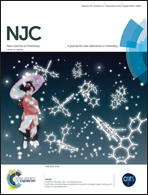Templating synthesis of metal oxides by an incipient wetness impregnation route and their activities for CO oxidation†
Abstract
Various metal oxides, including Co3O4, NiO, CeO2 and Ce0.7Cu0.3O2, were synthesized by an incipient wetness impregnation (IWI) route using mesoporous silica SBA-16 and SBA-15 as templates, and their catalytic performances were evaluated by the CO oxidation model reaction. Templating is a powerful technology for the preparation of materials with desired morphology, while the IWI route guarantees the metal in solution permeating into the pores of the template by a capillary pressure. Thus mesoporous metal oxides with near-perfect surface morphologies, such as three-dimensional nano-sized particles and two-dimensional nanowires, and controlled particle size were prepared from shaped templates using the IWI route. Characterizations such as TEM and H2-TPR measurements indicated that Co3O4 replicated from SBA-16 hydrolyzed at 80 °C (namely, Co3O4-16_80) has the smallest particle size, the highest surface area and the strongest reducibility, thus leading to the best activity for CO oxidation. Furthermore, the sample can be reused with no loss of activity in the second run, and exhibited good long-term stability, with less than 6% decrease in the activity after running at 120 °C for 36 h.


 Please wait while we load your content...
Please wait while we load your content...